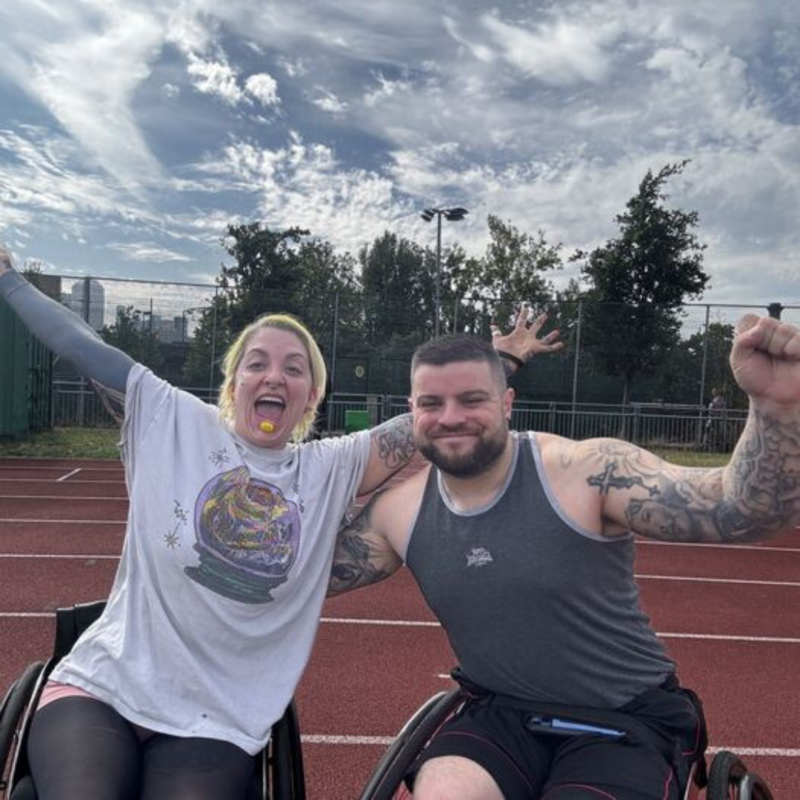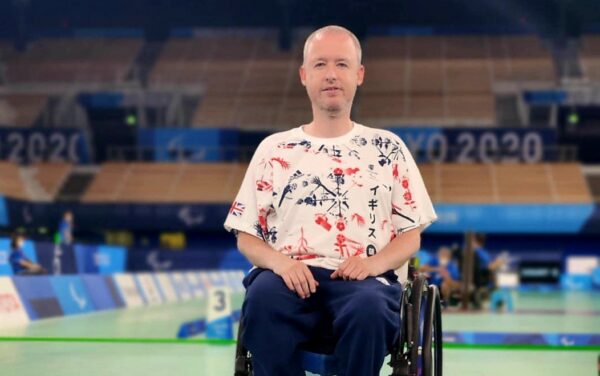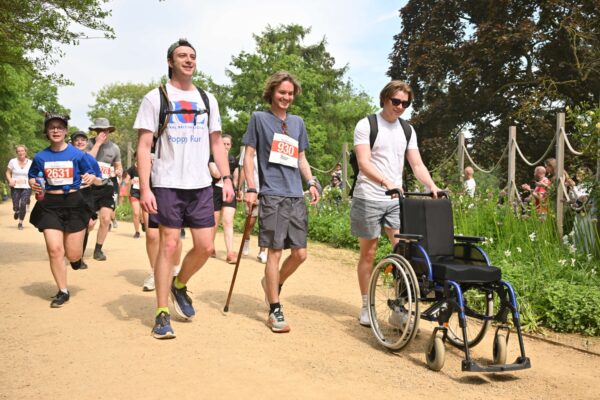When 46-year-old Jason Croucher had to take early retirement from the London Fire Brigade after 22 years of service, he wasn’t sure what lay ahead. Having been diagnosed with limb-girdle muscular dystrophy, he was no stranger to uncertainty, but even Jason wasn’t expecting he’d end up playing golf at an elite European level – or that he’d become an Muscular Dystrophy UK Ambassador for the sport.
From putting out fires to putting golf balls at an elite level: Jason’s journey into the world of golf
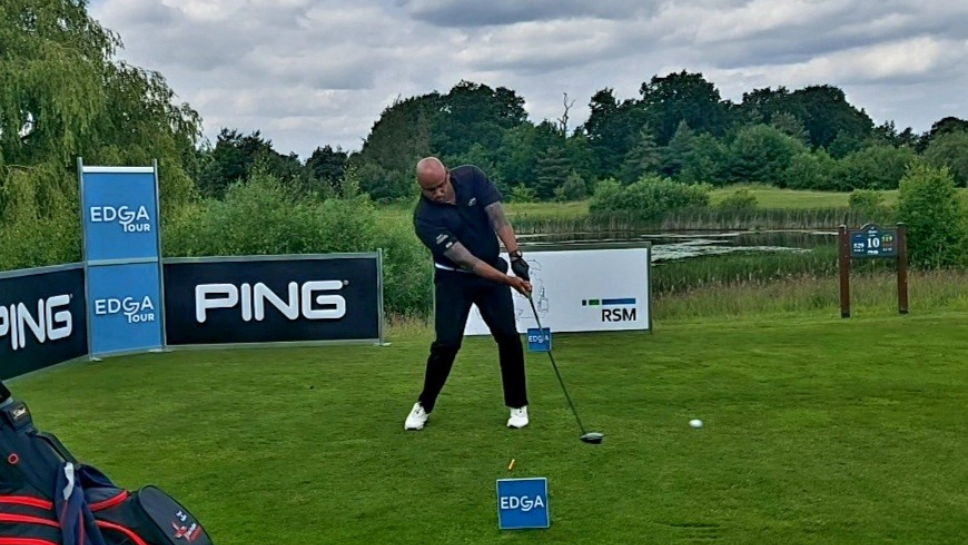
I’ve always been very active – I think that’s why being in the Fire Brigade suited me so well.
I used to play all kinds of sports, from rugby to boxing. I even raced super bikes for a while; all kinds of crazy physical stuff.
In 2018, I was diagnosed with a late onset limb-girdle muscular dystrophy. Even with ongoing hydrotherapy, I became less able to do the physical stuff. But I was still me. I still loved sport and wanted to do something for myself, for my wellbeing.
That’s how I first got into playing golf, and what led me to where I am now.
As much as I loved being in the Fire Brigade, if you’d have asked me back then, “Would you like to become a touring golf player competing at the European level?” – I’d have chewed your arm off!
Jason’s struggle to find a diagnosis
It was about 2015, when I was in my late 30s, when I first started slowly noticing that something wasn’t quite right with my body.
I remember going to my GP and saying, “My left pictorial muscle appears to be disappearing”. I was referred to the hospital and from that day on, I had two and a half years of tests – from biopsies to nerve conduction studies – to try and find out what was going on.
When you don’t see that path forward, the future becomes a real concern.
Over that period of time, it felt like almost nothing but confusion and anxiety – for me and for my partner and my two kids, who were both under 10 at the time.
We knew something was happening to my body, but we didn’t know what. I wondered if it would affect my heart or my brain. I didn’t know what the future was going to hold – it was a very anxious and such a challenging time for not only me, but my whole family.
That’s why finally having a diagnosis helped. I could now see the path ahead of me. It was like being given a chance to manage what was happening to me.
Having to take early retirement from the Fire Brigade
Once I knew what I was dealing with, I decided to take full advantage of the control.
I could start to “push, push, push” within the realm of what I was able to do. I began managing the condition with hydrotherapy and embraced everything I could with regards to support. But I was still experiencing muscle atrophy, where the muscle tissue starts to thin out and waste away, and it was getting worse.
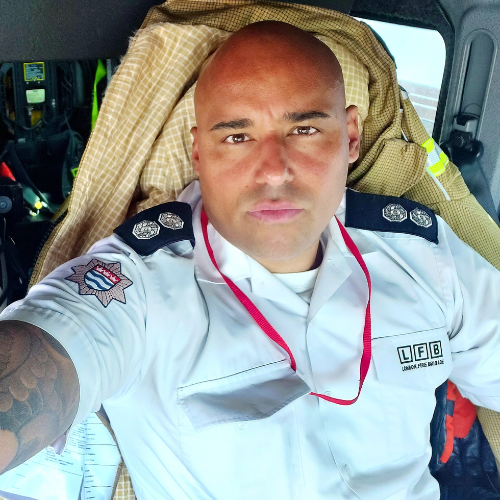
In 2021 at 45 years of age, I had to retire from the London Fire Brigade. After two decades, I had to leave a job that I loved, where I’d been able to do so much good for the communities in the East End of London.
It broke my heart, but I knew it had to happen. As a Firefighter, you become a risk to yourself and others if you’re unable to perform how you need to physically.
After I retired, I was at a bit of a loose end. I found Muscular Dystrophy UK, which was so helpful, which was a big God-send, but I wanted to find a new passion.
That’s how I started playing golf.
I was looking for a sport I could do with my condition. Golf made sense because you don’t exert as much energy with it being a gentler pace; you don’t need to be running about.
As I started playing, I realised there was also a huge wellbeing and health aspect. It felt so good to be outside, playing sport and socialising with people.
“You’re in an environment where you don’t have a phone or the stresses of life; you can forget your troubles for a bit.”
Golf also appealed to me because it’s a really fair sport to take part in. It’s really inclusive, even at the elite level. There are pro-golfers out there playing at the elite level who are paralyzed from the waist down.
Lots of players use a ParaGolfer wheelchair, which lifts them up to a standing position so they can swing the club.
Discovering the disabled golf community – and playing at the elite level
After a while, I started looking for a place where disabled people and people with different physical abilities could play golf – I wanted to meet other people who were in my position who were already playing together.
That’s when I came across the European Disabled Golf Association (EDGA). They hold the European Disabled Golf Association Tour, where world-ranking players with disabilities compete.
The level that these elite golfers were playing blew my mind. There was pretty much no difference in their abilities to the able-bodied elite golfers playing on TV.

With a combination of constant hydrotherapy and fatigue management, I started dipping my toe in. I played three Euro tour events in 2022.
What needs to change to make golf more accessible
While organisations like EDGA are great, I think golf still has a long way to go in terms of improving accessibility for disabled players.
When I wanted to play with and against other people who had physical disabilities, I had to go out and find those pathways. It wasn’t easy.
There’s no one single website where you find a list of accessible sport facilities. There’s nowhere you can go to say, “I need this as a disabled person; what’s your access like? What’s the parking like?”.
I do believe we can change things. I think the more we push and share our stories on social media and just refuse to stay quiet, the faster we’ll get to where we need to be.
And there are organisations who are pushing for that change. The Golf Trust provides free training for people with disabilities, to teach them how to play and ensure they’ve got the right access to play.
They run a number of golf clubs up and down the country; all of which have ParaGolfer wheelchairs that are free to use and coaches to help people use them.
Getting more people with muscle wasting conditions into playing golf
For now, my aspirations are just to continue to play and to bring more people with me into the world of golf.
It’s something that I’m really passionate about.
This kind of thing is important. We can’t all run marathons; but golf is something that almost anyone can successfully play, whatever their physical ability.
I want people out there to know that whatever cards life deals you, there is a way to find joy. You’ve just got to find the path forward.
